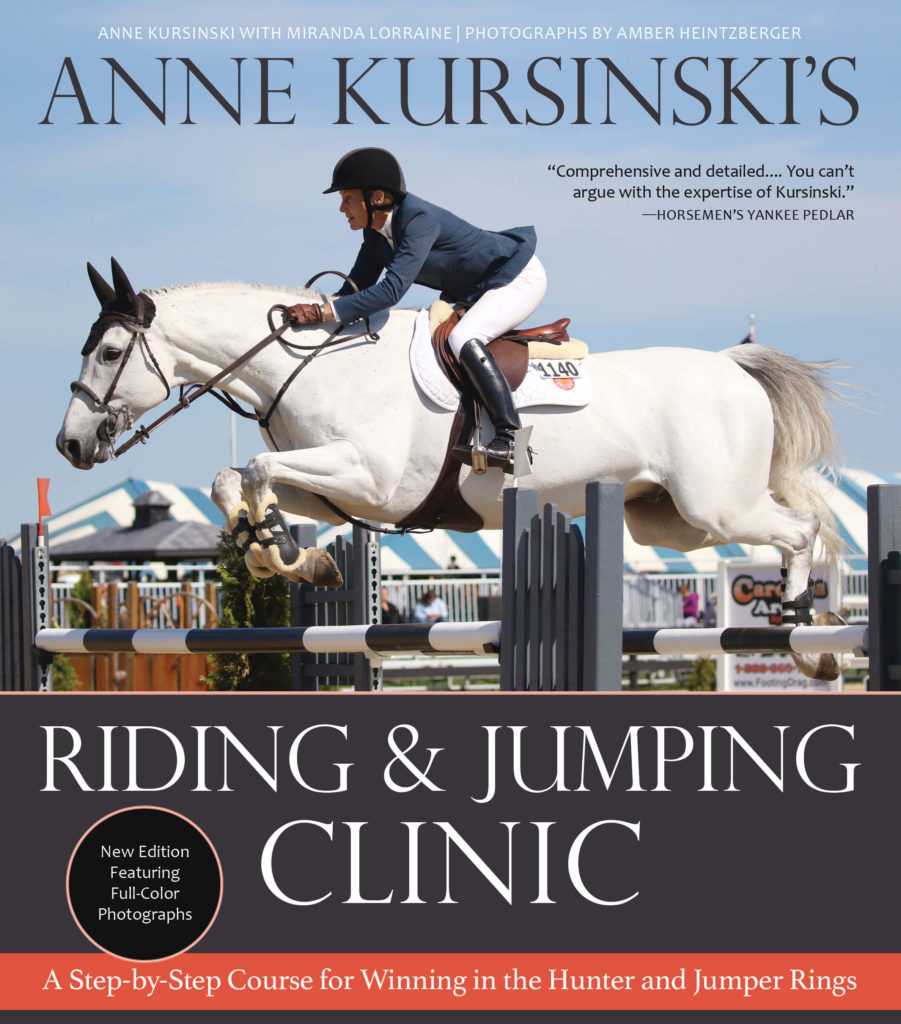This excerpt from “Anne Kursinski’s Riding & Jumping Clinic” by Anne Kursinski is reprinted with permission of Trafalgar Square Books.
In this excerpt from the new edition of Anne Kursinski’s Riding & Jumping Clinic, Olympian Anne Kursinski has you ride the Figure Eight Over Two Rails exercise right along with her.
To develop your eyes’ accuracy and your horse’s suppleness, visualize a circle 20 meters across (about 60 feet), then place two rails across the circular track, one at the equivalent of nine o’clock and the other at three o’clock.
Now ride the two rails on the ground as a figure eight. First trot and then canter a simple figure eight. In the canter, cross the first rail. After landing, turn onto the diagonal, and change leads through the trot at the midpoint of the diagonal. Keep using your eyes to define the track, and turn in time to let yourself cross the midpoint of the second rail straight. Then continue back across the diagonal again to complete your figure eight.
 Photo by Amber Heintzberger.
Photo by Amber Heintzberger.
Trotting Over the Rails with Anne
Start in the trot. This turn is short so I will see bending over the rail and around the turn that follows. My eyes look in, looking into the imaginary line across the diagonal. As we get to the diagonal, we’ll straighten.
I do not lean in or out; I’m in the center of my horse. My eyes shift to the right to look at the second rail. My hands are slightly right, beginning to make the right bend; I’m changing my posting diagonal and riding my horse to the center of this new rail.
After a few simple figure eights, I make the exercise a little more challenging: At the trot, I cross one rail, and ride a small circle to the inside that takes me back over the rail again. Then I go on with the figure eight. I travel the diagonal and turn for the second rail, and cross it a second time on a small circle before riding back to complete the figure eight.
Cantering Over the Rails with Anne
After two or three figure-eights-plus-circles at the trot, challenge your horse’s balance and your eye a little more by riding the same pattern at the canter. You’ll stay on one lead as you circle to the inside after the first rail, cross it again, doing your best to aim right for the center, and curve around for your diagonal path toward the second half of the figure eight. Doing this exercise at the canter is especially effective for making your horse more supple and obedient to the directional signals you give with your eyes.
Before I step over the first rail on the right rein, I look right; we land turning into a tight arc. Now my eyes are back on the rail. My reins are asking my horse to turn and take short strides so that we’ll make a small circle. My inside leg bends him while my outside leg helps to bring him around and keep this short canter. We’re arriving at the center of the rail off our tight turn, and already I’m looking for the diagonal line I need to reach the second half of the exercise.
One more thing to think about is a lead change at the midpoint of the diagonal.
This is a simple change through the trot. My eyes keep the line while I feel for the trot. I take a half-halt with my arms, and as soon as I feel the trot rhythm, I close my right leg and ask for the left lead, returning to the canter and all the while staying on my pattern. When you and your horse are more advanced, you can make a flying change through the diagonal.
Pick a spot to come to a smooth halt (never just a haphazard sloppy ending) and evaluate your ride. When you’ve been able to keep your horse consistently on track for two or three figure-eights-plus-circles without tugging at the reins or losing your position, you’ll have accomplished enough for the day.
Pick up your copy of Anne Kursinski’s Riding & Jumping Clinic here.

